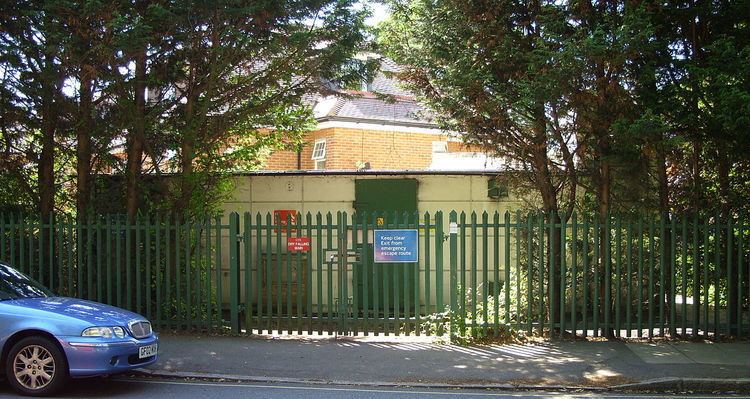Location North End Number of platforms 2 (unfinished) | Owner Never opened | |
 | ||
Lists of stations DLRUndergroundNational RailTramlink Address 1 Wildwood Grove, London NW3 7HU, UK Similar City Road tube station, Brockley Hill tube station, King William Street tub, South Kentish Town tub, Cranley Gardens railway st | ||
North End (commonly referred to as Bull and Bush) is a never-completed underground station, on the Charing Cross, Euston and Hampstead Railway (CCE&HR, now part of the London Underground's Northern line). The station was to have been built at North End on the boundaries of Hampstead Heath and Golders Hill Park and is located between Hampstead and Golders Green.
History
The original Royal Assent for the construction of the CCE&HR had been granted under the Charing Cross, Euston and Hampstead Railway Act, 1893 but gave permission for a railway only as far north as Hampstead. Financing difficulties meant that no work had been begun by the beginning of the 20th century and the company was bought out by a syndicate led by American financier Charles Yerkes in 1900. Following the purchase, plans were revised to continue the route under the Heath to Golders Green where a depot could be constructed and where open farmland offered opportunities for property development.
The new proposals met with strong opposition from residents of Hampstead and users of the Heath who feared that the construction of tunnels would detrimentally affect the Heath's ecology. The Metropolitan Borough of Hampstead also initially objected but relented and parliamentary approval was granted for the extended route in the Charing Cross, Euston and Hampstead Railway Act, 1903.
One of the conditions for construction of the extended route was the provision of an intermediate station at North End, which would have been located on Hampstead Way. The station would have served a new residential development being planned to the north of the heath but Henrietta Barnett instigated the purchase of the land in 1904 to form the Hampstead Heath Extension instead. Tunnelling for the CCE&HR had begun in 1903 and initially plans for the construction of the station continued to the extent that the larger diameter station tunnels and low level passageways were excavated; however, it became apparent that the removal of the proposed residential development would significantly reduce the number of passengers using the station.
Works on the station were ended in 1906 before the lift shafts were dug and before any work on a surface building was done. Services began on the CCE&HR on 22 June 1907, running through the abandoned station. The uncompleted platforms and lower passageways remain, bricked off from the tracks. During World War II it was used to store secret archives with access only available from the cabs of passing service trains.
During the Cold War a shaft was dug down to the lower passageways and the abandoned station became part of the London Underground's civil defence preparations. As the tunnels were the deepest in the network it was an ideal site. The role of the control centre was to manage the emergency floodgates placed throughout the tube network at the start of World War II. During this period, the building at the top was disguised as an electricity substation through the appropriate signage. The exits from the platform tunnels are now marked as emergency evacuation routes from the Underground system, and its function is now publicly acknowledged.
Due to its location near the top of a hill, the station would have been, at 221 feet (67 m) deep, the deepest on the entire Underground network. The current deepest is the adjacent Hampstead station to the south-east.
The station's alternative name derives from its proximity to the nearby Bull and Bush public house.
